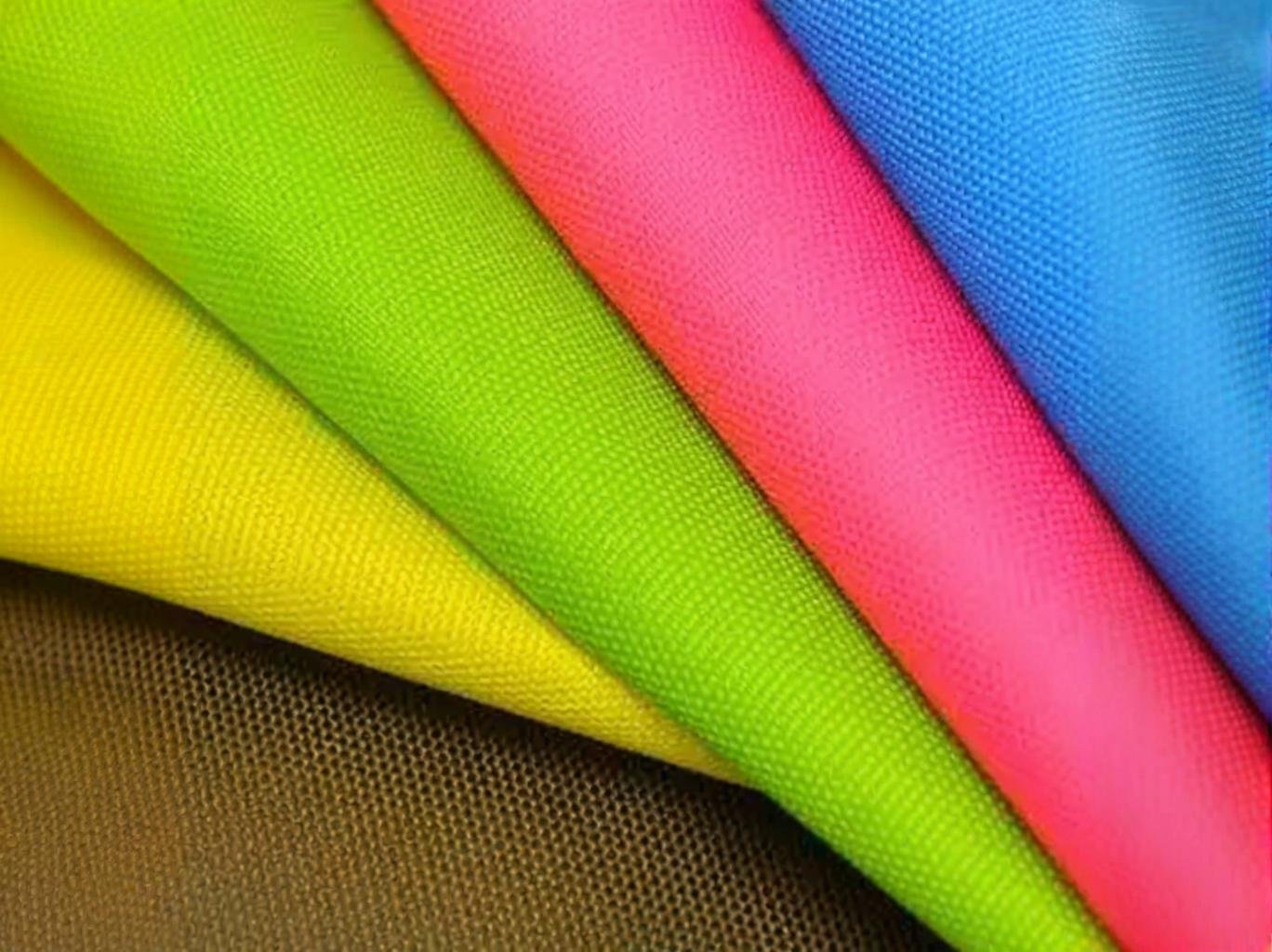Understanding the Different Types of Silk Fabric: A Comprehensive Guide for B2B Buyers
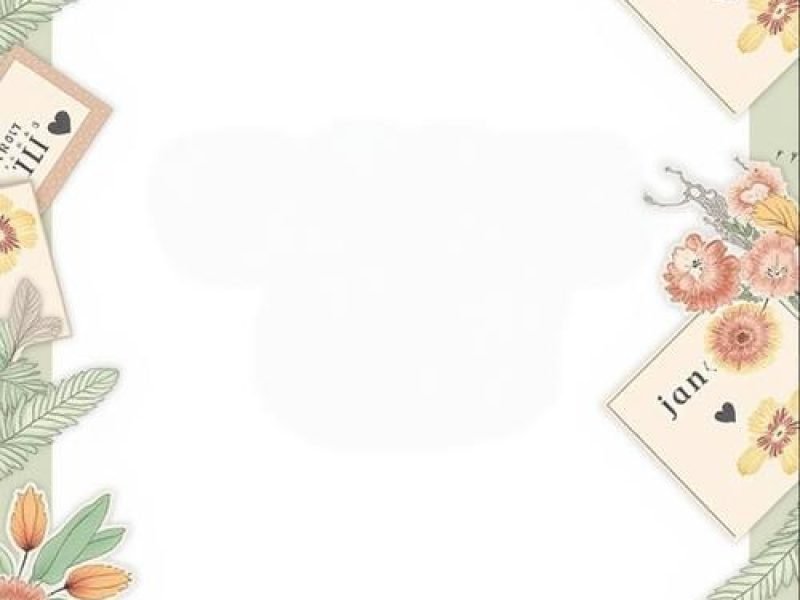
Silk has always been a symbol of elegance, but for B2B buyers in today’s textile market, understanding silk means more than just admiring its shine. It’s about choosing the right silk fabric that meets your brand’s performance, budget, aesthetic, and sustainability goals. Whether you’re developing high-end bedding, luxury fashion lines, or eco-conscious interior collections, different types of silk offer vastly different benefits—and price points.
The main types of silk fabric used in global B2B manufacturing include mulberry silk, tussar silk, eri silk, and muga silk, each offering unique characteristics in texture, cost, and use. The weave—like charmeuse, dupioni, or organza—also dramatically affects end-use suitability. Knowing these differences helps buyers make informed sourcing decisions and avoid costly mismatches.
A few years ago, a small home textile brand in California sourced “100% silk” for luxury pillowcases from an overseas supplier—only to discover they had received coarse, low-sheen tussar silk instead of charmeuse-woven mulberry silk. The result? Product returns, damaged reviews, and lost credibility. This guide ensures that doesn’t happen to you.
What Are the Main Types of Silk Fabric Used in the Textile Industry?
The four main types of silk used in commercial textile manufacturing are mulberry silk, tussar silk, eri silk, and muga silk. Each differs in fiber texture, sheen, sustainability, and price—making them suitable for different B2B applications.
These silk types are named not for the weave, but for the type of silkworm and region they come from. Mulberry is the most refined and widely used; the others offer rustic appeal or ethical sourcing benefits.
Silk Type Overview for B2B Buyers
1. Mulberry Silk (Bombyx mori)
- Fiber Texture: Ultra-smooth, uniform
- Color: Natural white
- Use: Luxury bedding, high-end garments, scarves
- Pros: Strongest natural silk fiber, easiest to dye
- Cons: Higher cost, traditional sericulture involves cocoon boiling
2. Tussar Silk (Antheraea mylitta)
- Fiber Texture: Coarse, uneven
- Color: Naturally golden-brown
- Use: Decorative drapery, rustic fashion
- Pros: Affordable, wild silk, unique texture
- Cons: Less durable, not ideal for close-skin contact
3. Eri Silk (Philosamia ricini)
- Fiber Texture: Soft, cotton-like
- Color: Off-white or beige
- Use: Ethical clothing, upholstery
- Pros: Peace silk (non-violent extraction), washable
- Cons: Matte appearance, not glossy
4. Muga Silk (Antheraea assamensis)
- Fiber Texture: Stiff and strong
- Color: Naturally golden yellow
- Use: Ceremonial wear, heritage collections
- Pros: Rare, durable, doesn’t need dyeing
- Cons: Expensive, limited availability
Silk Types at a Glance
| Silk Type | Texture | Gloss | Ethical? | Durability | Price Range | Common Use |
|---|---|---|---|---|---|---|
| Mulberry | Smooth & soft | High | Moderate | High | \$\$\$ | Bedding, fashion, luxury goods |
| Tussar | Coarse & firm | Low | Yes | Moderate | \$\$ | Drapes, cultural garments |
| Eri | Matte & fluffy | Low | Yes | Moderate | \$\$ | Ethical fashion, sustainable textiles |
| Muga | Crisp & thick | Medium | Moderate | Very High | \$\$\$\$ | Heritage textiles, accessories |
A French fashion brand sourcing 6A mulberry silk charmeuse from SzoneierFabrics for bridal gowns increased their average resale value per gown by 35% due to the premium feel and drape.
How Do Mulberry, Tussar, Eri, and Muga Silk Differ in Properties and Applications?
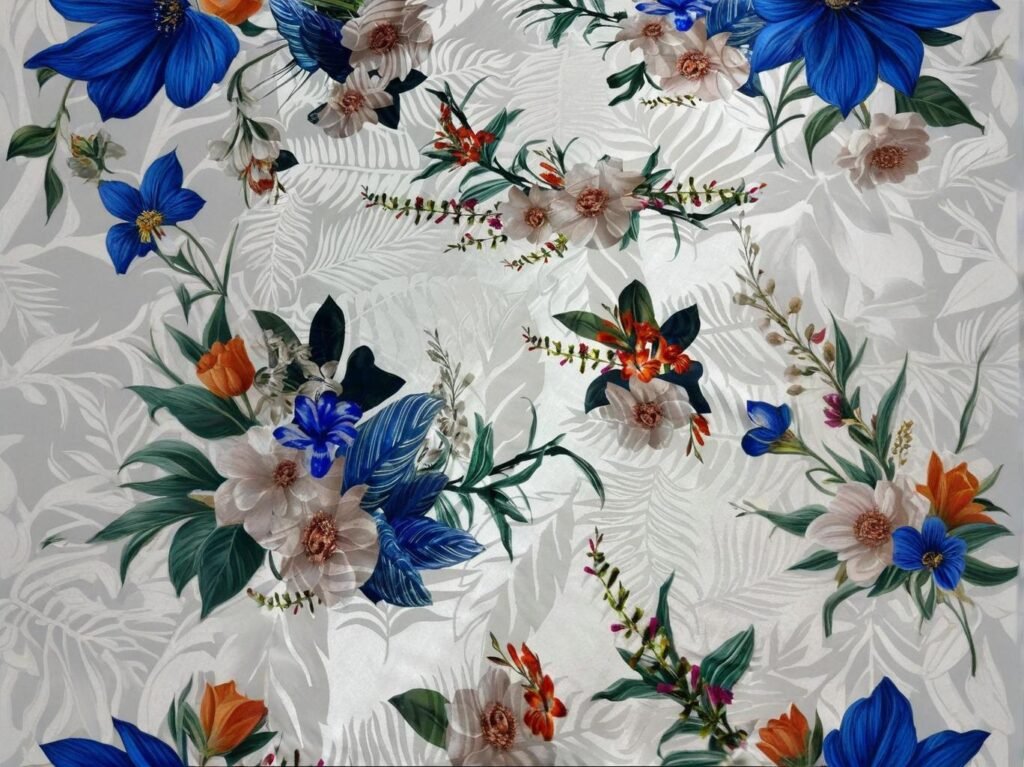
These four silk types differ in fiber yield, softness, sheen, ethical harvesting, and market availability, which influences how they are used across various textile segments.
Choosing between them isn’t just about budget. It’s about aligning material characteristics with product intent. For instance, you wouldn’t use coarse tussar silk for a sleep mask, nor use delicate mulberry silk in rugged upholstery.
Application Mapping by Silk Type
1. Fashion and Apparel
| Silk Type | Best For | Not Ideal For |
|---|---|---|
| Mulberry | Bridalwear, lingerie, blouses | Outerwear or rustic themes |
| Tussar | Sarees, boho dresses, structured coats | Undergarments, fine accessories |
| Eri | Ethical wear, baby clothes | Glossy fashion items |
| Muga | Cultural attire, evening wear | Daily wear, fast fashion |
2. Home Textiles
| Silk Type | Ideal Products | Cautions |
|---|---|---|
| Mulberry | Pillowcases, sheets, curtains | Needs delicate wash care |
| Tussar | Drapes, cushion covers | Can fray over time if untreated |
| Eri | Throws, wall panels | Matte finish, not for glam décor |
| Muga | Decorative runners, premium rugs | May be too stiff for bedding |
3. Sustainability and Brand Narrative
- Eri silk is called “Ahimsa silk” or peace silk—harvested after the moth leaves the cocoon. Brands in wellness, vegan, or cruelty-free niches market this successfully.
- Muga silk is heritage-certified in Assam (India), ideal for storytelling in heritage fashion or boutique interiors.
An Australian eco-home brand switched from cotton-silk blends to eri silk cushion covers via SzoneierFabrics. Their campaign using the tagline “Kind to the Earth, Kinder to You” saw engagement rise 3x on social platforms.
Which Silk Weaves—Charmeuse, Habotai, Dupioni, or Organza—Suit Different End Uses?
The choice of silk weave—such as charmeuse, habotai, dupioni, or organza—directly impacts the texture, sheen, drape, and final application of silk fabric in fashion, home, or upholstery products.
Even when using the same fiber, different weaving styles can result in drastically different material behaviors. Charmeuse is fluid and luxurious, organza is stiff and sheer, dupioni is textured and rustic—making your product design and market positioning heavily reliant on choosing the right weave.
Popular Silk Weaves and Their Uses
1. Charmeuse Silk
- Structure: Satin weave with a shiny front and dull back
- Feel: Ultra-soft, fluid drape
- Use Cases: Lingerie, blouses, pillowcases, scarves
- B2B Tip: Best used for premium-grade bedding or luxury apparel where skin contact and sheen are priorities.
2. Habotai Silk (China Silk)
- Structure: Plain weave, lightweight
- Feel: Smooth, crisp, semi-sheer
- Use Cases: Linings, summer dresses, thin curtains
- B2B Tip: Cost-effective for linings or casual fashion lines; easy to dye and print.
3. Dupioni Silk
- Structure: Plain weave with uneven yarns (from double cocoons)
- Feel: Crisp, slightly rough, visible slubs
- Use Cases: Structured garments, upholstery, decorative drapes
- B2B Tip: Popular in bridal and formal wear for texture; often used in boutique interiors for its rustic luxury.
4. Organza Silk
- Structure: Very thin, open plain weave
- Feel: Stiff, sheer, crisp
- Use Cases: Evening gowns, stage costumes, window sheers
- B2B Tip: Choose organza when light diffusion and structural form are key, such as in layered designs or elegant event drapery.
Silk Weaves Comparison Table
| Weave Type | Texture | Sheen | Drape Quality | Common Applications | Price Tier |
|---|---|---|---|---|---|
| Charmeuse | Soft, flowing | High | Excellent | Bedding, lingerie, scarves | \$\$\$ |
| Habotai | Smooth, crisp | Medium | Good | Linings, sleepwear | \$\$ |
| Dupioni | Textured, slubby | Medium | Moderate | Formalwear, cushions | \$\$\$ |
| Organza | Crisp, sheer | Low | Poor (stiff) | Curtains, bridal overlays | \$\$ |
A New York-based fashion label ordered charmeuse and dupioni silk from SzoneierFabrics for its wedding capsule. The bridesmaid dresses in charmeuse and bride’s gown in handwoven dupioni created a textural contrast that became a highlight in bridal magazines, driving pre-orders 40% above projection.
Is Pure Silk Always Better than Silk Blends for Home and Apparel Textiles?
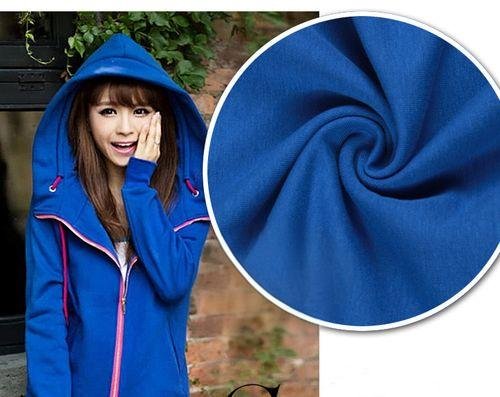
Not always—while pure silk offers unmatched softness and luxury, silk blends like silk-cotton, silk-wool, or silk-viscose can improve durability, reduce cost, and make maintenance easier for everyday use.
B2B buyers often assume “100% silk” is the best option. However, for many applications—especially where washability, wrinkle resistance, or budget constraints are involved—blends offer practical advantages without sacrificing elegance.
Pros and Cons of Silk vs. Silk Blends
1. Common Silk Blends and Their Benefits
| Blend Type | Silk % | Partner Fiber | Key Advantages |
|---|---|---|---|
| Silk-Cotton | 30–70% | Cotton | Breathable, matte-gloss balance, more durable |
| Silk-Viscose | 40–60% | Viscose/Rayon | More affordable, smooth drape, easy dyeing |
| Silk-Wool | 50–80% | Wool | Insulating, soft yet structured, winterwear |
| Silk-Linen | 30–60% | Linen | Crisp finish, natural wrinkle, eco-friendly |
2. Use-Based Decision Making
- Luxury Bedding: Go for 100% mulberry charmeuse if softness is priority.
- Curtains and Drapes: Silk-cotton or silk-viscose offers sheen with better UV and wrinkle resistance.
- Formalwear: Pure silk for bridal, but blends are smarter for everyday fashion lines.
3. Cost Considerations
Silk blends are 20%–50% cheaper than pure silk fabrics, depending on fiber ratio and region of production.
| Fabric Type | Price per Meter (USD) | Typical MOQ (SzoneierFabrics) |
|---|---|---|
| 100% Mulberry Silk | \$25–\$40 | 50 meters |
| Silk-Cotton Blend | \$12–\$20 | 50 meters |
| Silk-Viscose Blend | \$10–\$18 | 50 meters |
At SzoneierFabrics, over 60% of B2B clients opt for silk blends when launching mid-tier product lines, especially in home décor and apparel. It provides flexibility in finishing while maintaining a luxury perception.
4. Care and Maintenance
Pure silk often requires dry cleaning and delicate handling. Silk blends can usually withstand gentle machine washing, making them more viable for products like duvet covers, dresses, and hotel textiles.
How Do GSM, Thread Count, and Filament Length Affect Silk Fabric Quality?
GSM (grams per square meter), thread count, and filament length are critical indicators of silk fabric quality—affecting durability, drape, softness, and price. High GSM and long filaments typically signify premium-grade silk.
For B2B buyers, especially those sourcing for luxury products or direct-to-consumer (DTC) brands, understanding these metrics helps avoid overpaying or mislabeling products. These parameters determine not only tactile quality but also longevity and wash performance.
Silk Quality Metrics Decoded
1. GSM – Grams per Square Meter
GSM refers to fabric weight per square meter. A higher GSM silk is denser, more opaque, and typically more durable.
| GSM Range | Description | Recommended Use |
|---|---|---|
| 30–50 | Ultra-light, sheer | Scarves, lingerie, veils, linings |
| 51–70 | Standard habotai, mid-sheen | Blouses, summer dresses |
| 71–95 | Charmeuse, standard bedding | Pillowcases, duvets, bridalwear |
| 96–150+ | Heavy satin, upholstery-grade | Drapes, cushions, coats, winterwear |
For high-end bedding, 80–95 GSM charmeuse silk is the industry sweet spot. It offers balance between softness and strength.
2. Thread Count
Thread count measures the number of threads per inch (warp + weft). In silk, it matters primarily for bedding and curtains.
- Low Thread Count (<300): Lighter, more breathable; great for summer use
- High Thread Count (400–800): Luxurious feel, wrinkle-resistant, denser weave
Misleading Alert: Some suppliers inflate thread count without increasing density. Ensure you also check GSM or request swatches.
3. Filament Length
Silk is a filament fiber, meaning it can be spun in continuous strands.
- Long Filament (Reeled Silk): Smooth, lustrous, strong—ideal for high-end apparel and bedding.
- Short Filament (Spun Silk): Slightly matte, less expensive—used in affordable silk products.
| Type | Characteristics | Best Use |
|---|---|---|
| Reeled Silk | Long filament, glossy | Scarves, blouses, fine bedding |
| Spun Silk | Short filament, matte texture | Drapery, casual wear, eco-friendly lines |
SzoneierFabrics offers 6A grade reeled silk in charmeuse weave with 85 GSM and 600TC, ideal for luxury duvet covers sold by hotel and wellness brands in Europe.
What Are the Common Finishing Techniques for Silk Fabrics in B2B Custom Orders?
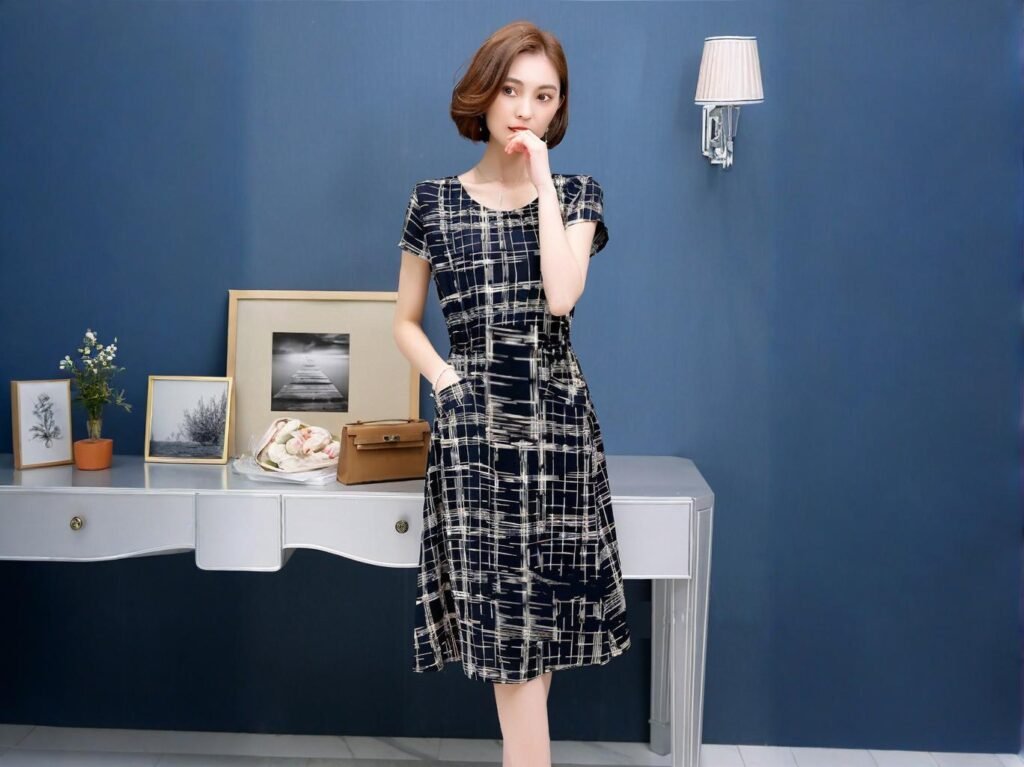
Common silk fabric finishing techniques include sand washing, enzyme treatment, calendaring, digital printing, and jacquard weaving. These finishes influence the final texture, shine, colorfastness, and print detail, making them essential for B2B customization.
Finishing is the final step that tailors raw silk into market-ready fabrics. B2B buyers should understand these options when ordering custom or branded silk materials.
Silk Finishing Options and Their Effects
1. Sand Washing
A mechanical process that softens the fabric and gives it a matte finish. Popular for casual wear and soft-touch bedding.
- Pros: Softens silk, reduces shine
- Best For: Loungewear, men’s shirts, boho dresses
2. Enzyme Washing
Uses natural enzymes to relax the fibers and reduce friction.
- Pros: Eco-friendly, reduces pilling, improves feel
- Common Use: Apparel and eco-textiles
3. Calendaring
Fabric is passed through heated rollers to increase gloss and smoothness.
- Pros: High-end gloss, luxury appearance
- Used In: Formalwear, evening drapes, couture projects
| Finish Type | Gloss Level | Texture Outcome | Cost Impact | Sustainability |
|---|---|---|---|---|
| Sand Washed | Low | Soft, suede-like | \$\$ | Eco-friendly |
| Enzyme Washed | Low | Relaxed, breathable | \$\$ | High |
| Calendared | High | Crisp, smooth | \$\$\$ | Moderate |
| Digital Printed | Variable | Design-specific | \$\$ | High |
| Jacquard Woven | Matte/Gloss | Patterned texture | \$\$\$ | Depends on fiber |
4. Digital Printing
Enables high-resolution, low-MOQ design printing onto silk.
- Pros: Precise branding, vibrant colors
- Best For: Scarves, private label accessories, corporate gifts
5. Jacquard Weaving
Intricate woven patterns made on specialized looms. Adds depth and luxury appeal without dye.
A Tokyo-based brand collaborated with SzoneierFabrics to develop silk jacquard throws featuring their geometric logo pattern. The product became their best-selling winter item, even outselling their previous cashmere collection.
6. Custom Color Dyeing
Pantone-matched dyeing is common for B2B clients needing brand consistency across multiple SKUs.
Ask for lab-dip samples before committing to bulk dye lots to ensure color accuracy under different lighting conditions.
Which Certifications and Sustainability Standards Should B2B Buyers Look For?
B2B buyers should prioritize silk fabrics certified by OEKO-TEX Standard 100, GOTS (for organic blends), ISO 9001, and if applicable, FSC or bluesign®. These standards guarantee safety, sustainability, and quality consistency across the supply chain.
In today’s B2B landscape, certifications are not just marketing tools—they’re a procurement necessity. Brands want transparency. End users demand traceability. And buyers want assurance that their investments meet regulatory and consumer expectations.
Key Certifications for Silk Fabric Buyers
1. OEKO-TEX® Standard 100
- What it is: Tests finished fabric for harmful substances
- Why it matters: Ensures the silk is skin-safe, including for babies
- Ideal for: Apparel, bedding, lingerie, and accessories
A German infantwear brand sourcing OEKO-TEX certified silk from SzoneierFabrics gained distribution access to stricter European baby goods markets.
2. GOTS (Global Organic Textile Standard)
- What it is: Covers organic fiber content, ecological and social criteria
- Applies to: Organic silk blends (e.g., silk-cotton)
- Why it matters: Appeals to green brands and sustainable buyers
3. ISO 9001
- What it is: International quality management certification
- Why it matters: Assures consistency in production and fulfillment
- Especially relevant for: High-volume or white-label buyers
4. FSC Certification (for packaging)
- Why relevant? Szoneier offers FSC-certified recyclable fabric packaging—key for eco-conscious brands.
5. bluesign® Approved Processes
- What it does: Controls environmental impact across production
- Current trend: Increasingly requested by sportswear and wellness brands using silk in blends
| Certification | Coverage Area | Target Buyer Industry | Required for… |
|---|---|---|---|
| OEKO-TEX 100 | Chemical safety | Babywear, bedding, fashion | European market access |
| GOTS | Organic and eco criteria | Green fashion, home goods | Sustainability marketing & compliance |
| ISO 9001 | Quality process control | Mass B2B, DTC exporters | Production reliability |
| bluesign® | Clean production processes | Outdoor, wellness brands | Low-impact textile claims |
| FSC | Sustainable packaging | E-commerce, retailers | Full sustainable branding experience |
How Can B2B Buyers Customize Silk Fabrics with Low MOQ and High Precision?
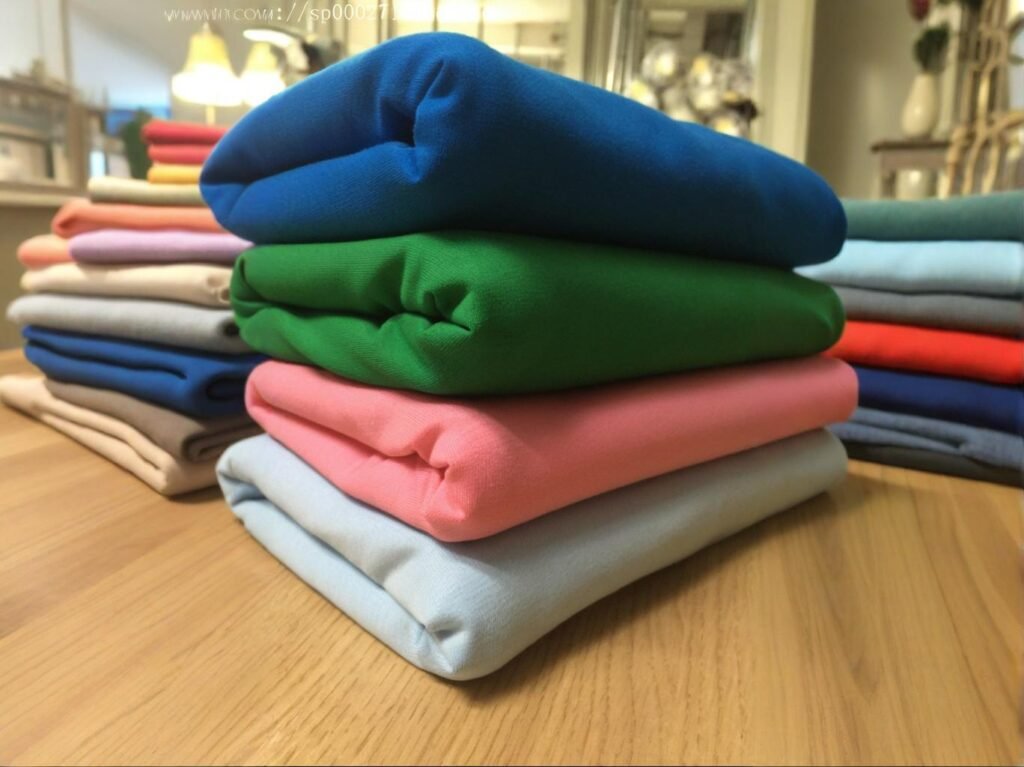
B2B buyers can customize silk fabrics through Pantone-matched dyeing, digital printing, jacquard weaving, and GSM/thread count adjustments—with MOQs as low as 50 meters offered by suppliers like SzoneierFabrics.
Gone are the days when custom silk orders required 500+ meters and six-month lead times. At SzoneierFabrics, you can create a fully branded silk collection—down to the packaging—with rapid sampling, low MOQ, and quick turnaround.
Customization Options for Today’s Silk Buyer
1. Color Matching & Lab Dips
- Upload a Pantone code or physical swatch.
- Receive lab-dip samples within 3–5 business days.
- MOQ: 50 meters per color (lower on request for sampling or launch phases)
2. Custom Weaves
- Adjust GSM for drape and opacity
- Add jacquard patterns, slub texture, or filament control
- Create signature textures unique to your brand
3. Logo & Branding Applications
- Digital Print: For repeat patterns or graphics
- Jacquard Weave: For subtle, woven-in branding
- Packaging: Add branded hangtags, tissue wraps, and FSC boxes
4. Flexible Sampling & Development
| Service | Lead Time | MOQ | Cost |
|---|---|---|---|
| Custom Dyeing | 3–5 days | 50 meters | Free sample swatch |
| Digital Print Sampling | 5–7 days | 10 meters | \$20–\$30/meter |
| Jacquard Loom Setup | 7–12 days | 100 meters | One-time setup fee |
| GSM/TC Adjustments | 5–10 days | 50 meters | Free R\&D consultation |
A Canadian boutique bedding label worked with SzoneierFabrics to develop a signature blush-toned silk-cotton sateen, complete with digital-printed logo tags. With just 100 meters, they launched a viral DTC collection that sold out in 2 weeks.
Ready to Source Premium Silk Fabric with Flexibility and Confidence?
If you’re a brand owner, textile importer, or product developer searching for reliable, customizable silk fabric sourcing, SzoneierFabrics is your solution. With over 18 years of manufacturing experience, a full in-house R\&D team, and an international client base, we make your silk sourcing efficient, transparent, and brand-focused.
✨ Why Partner with SzoneierFabrics?
- ✔ Low MOQ (as low as 50 meters)
- ✔ 100% Quality Assurance
- ✔ Fast Sampling in 3–5 Days
- ✔ Free Design Support
- ✔ International Shipping & Full Export Service
Let’s bring your next silk fabric idea to life—exactly the way you imagine it.
Can't find the answers?
No worries, please contact us and we will answer all the questions you have during the whole process of bag customization.
Make A Sample First?
If you have your own artwork, logo design files, or just an idea,please provide details about your project requirements, including preferred fabric, color, and customization options,we’re excited to assist you in bringing your bespoke bag designs to life through our sample production process.


